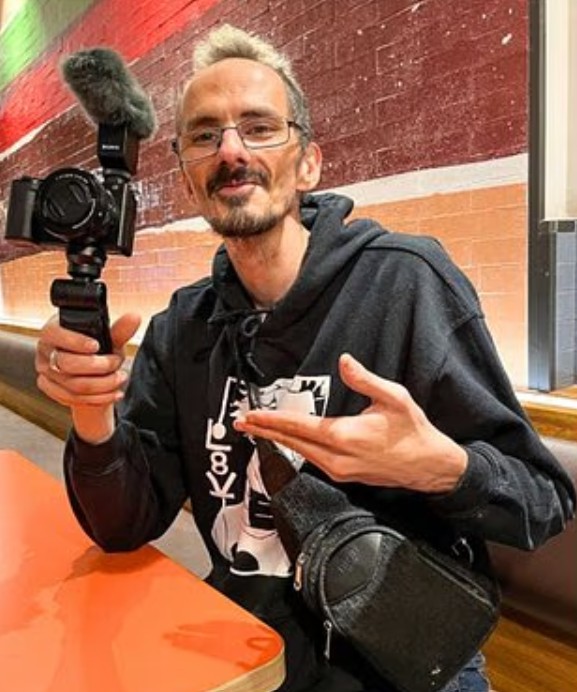The sudden death of French streamer Raphaël Graven, better known by his online pseudonym Jean Pormanove, has sparked shock and outrage in France and beyond. On August 18, during a livestream on the platform Kick that had been running for more than 298 hours, the 46-year-old died under circumstances that remain unclear. Viewers witnessed him being subjected to violence and humiliation by fellow influencers, a spectacle disturbingly reminiscent of episodes from the dystopian television series Black Mirror.

French prosecutors have since opened an investigation, ordering an autopsy to determine the cause of death. The incident not only raises questions about the role of online platforms but also about the growing appetite for extreme content and the ethical implications of livestream entertainment.
Full video and Who Was Raphaël Graven (Jean Pormanove)?
Before his tragic death, Raphaël Graven had built a notable presence on Kick, a live-streaming platform registered in Australia that offers revenue-sharing opportunities to creators. Graven, a former soldier, reinvented himself online under the pseudonym Jean Pormanove, where he quickly grew a following.
Full video of (Raphaël Graven) Jean Pormanove death
jean-pormanove-video.mp4
His channel, named after his online persona, attracted over 500,000 subscribers. Much of his content featured collaborations with other influencers, including Owen Cenazandotti, known as Naruto, and two others who became regulars in his broadcasts.
However, what set Graven apart from most streamers was not gaming, commentary, or lifestyle content. Instead, his streams were characterized by scenes of violence, abuse, and humiliation directed at him, often in front of thousands of live viewers. For some, he was seen as a willing performer; for others, a victim of exploitation.
Circumstances of His Death
The events leading to Graven’s death unfolded during an extraordinary livestream that lasted nearly 12 days straight. According to reports, the broadcast had been running for 298 hours when the fatal moment occurred.

On the night of August 18 in Contes, a village north of Nice, Graven’s co-streamers reportedly noticed that something was wrong while the group was lying down. Realizing that he had died, they quickly cut the broadcast.
The Nice prosecutor’s office immediately opened an investigation, assigning the case to the local judicial police. An autopsy was ordered, though at the time of writing, the exact cause of death has not yet been determined. Whether Graven’s passing was linked to exhaustion, underlying health conditions, or the repeated abuse he endured on camera remains to be clarified.
Violence and Abuse During Streams
Central to the tragedy is the disturbing nature of Graven’s broadcasts. French media outlets have circulated excerpts of the hours-long videos that shed light on what viewers had been watching for months.
In these clips, Graven is seen:
Suffering physical assaults, including being punched and strangled.
Enduring humiliation, with co-streamers pouring oil or paint over him.
Becoming a target of paintball gunfire, while insults were hurled at him.
These were not isolated incidents but recurring patterns in his streams. The ambiguity surrounding his participation remains troubling. While some argue that Graven willingly subjected himself to these ordeals for entertainment and online fame, others see his suffering as genuine and coerced.
The blurred line between “performance” and “reality” complicates the case. Even if the acts were staged, the toll on his body and psyche—particularly during a nearly two-week-long broadcast—could not be ignored.
Official and Public Reactions
The shocking death of Jean Pormanove has triggered strong reactions from French officials, regulators, and the public.
Government Response
Clara Chappaz, France’s junior minister for AI and digital technology, condemned both the violence and the circumstances that allowed it to be broadcast. Calling the incident “absolutely horrific,” she announced several measures:
Referring the matter to Arcom, the national digital and audiovisual communication regulator.
Filing a report to Pharos, France’s portal for reporting illicit internet content.
Requesting direct explanations from Kick about its role in hosting such content.
“The responsibility of online platforms for the dissemination of illegal content is not optional, it is the law,” Chappaz stated, emphasizing that streaming platforms must bear accountability when violent or degrading material is broadcast to wide audiences.
Kick’s Response
In the aftermath, Kick issued a statement pledging full cooperation with French authorities. The company announced that all co-streamers involved in the broadcast had been banned pending investigation and promised to conduct a review of its French content policies.
“Our priority is to protect creators and ensure a safer environment on Kick,” the platform wrote on X (formerly Twitter).
Public Debate
For many viewers and commentators, the tragedy has become a mirror reflecting the darker side of livestream culture. Critics compared the case to Black Mirror, pointing out the unsettling reality of audiences consuming violent spectacles for entertainment.
Questions have also been raised about viewer complicity. Thousands of people watched Jean Pormanove being humiliated and beaten live, with very few attempting to intervene or raise alarm. This silence underscores broader cultural issues about voyeurism, desensitization to violence, and the normalization of harmful content online.
The Role of Co-Streamers and Legal Defense
Attention has also focused on the influencers who appeared alongside Graven. His frequent collaborators, including Owen Cenazandotti (Naruto), engaged directly in many of the acts of violence or humiliation seen on the streams.
One of their lawyers, Yassin Sadouni, offered a controversial defense in interviews with French media. He argued that:
Graven had a history of cardiovascular problems, suggesting health issues may have contributed to his death.
The violent acts depicted in the streams were staged performances, following scripts rather than real abuse.
“All those scenes are just staged, they follow a script,” Sadouni insisted.
However, investigators and media footage cast doubt on this narrative. Even if certain elements were dramatized, the physical intensity of the abuse—combined with extreme sleep deprivation from continuous streaming—suggests a real and harmful impact. Whether the co-streamers will face criminal charges remains to be seen, but their involvement is under close judicial scrutiny.
Broader Implications for Streaming Culture
Beyond the investigation into Graven’s death lies a wider cultural debate about the ethics of streaming and digital entertainment.
Ethical Questions
The tragedy highlights a central dilemma: where do we draw the line between performance and exploitation? Online platforms thrive on content that pushes boundaries, and creators often face pressure to escalate stunts to retain audience engagement. When violence and humiliation become normalized as entertainment, the consequences can be devastating.
Platform Responsibility
Platforms like Kick face increasing scrutiny over how they moderate content. The legal framework in France—and across the European Union—requires online companies to take proactive measures to prevent the dissemination of illegal or harmful material. The Graven case may push regulators to impose stricter oversight and accountability measures on platforms hosting livestreams.
Impact on Influencers
For influencers themselves, the case exposes the dangers of seeking attention through extreme or shocking performances. Graven’s story shows how the relentless pursuit of views and followers can turn into a vicious cycle of self-destructive behavior, especially when audiences reward dangerous content with engagement.
The death of Raphaël Graven, alias Jean Pormanove, is more than a personal tragedy; it is a wake-up call for the streaming industry, regulators, and society at large. His passing during a livestream—amid scenes of violence, humiliation, and exhaustion—exemplifies the darkest extremes of online entertainment.
As investigations continue, authorities will determine the cause of death, the responsibility of co-streamers, and the liability of platforms like Kick. But beyond the legal outcomes, the case forces us to confront uncomfortable truths: about the appetite for extreme content, the complicity of audiences, and the urgent need for ethical boundaries in digital culture.
Like a scene lifted from dystopian fiction, the tragedy of Jean Pormanove reflects a world where suffering becomes spectacle. The challenge now is ensuring that such exploitation is not repeated—and that the digital spaces we create foster creativity and community, not cruelty and destruction.
News –
